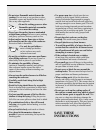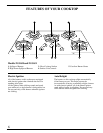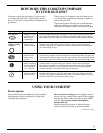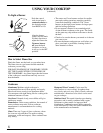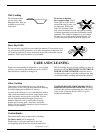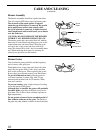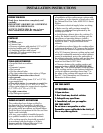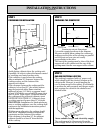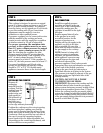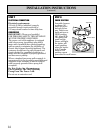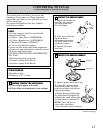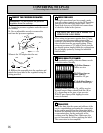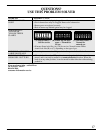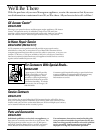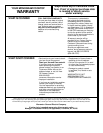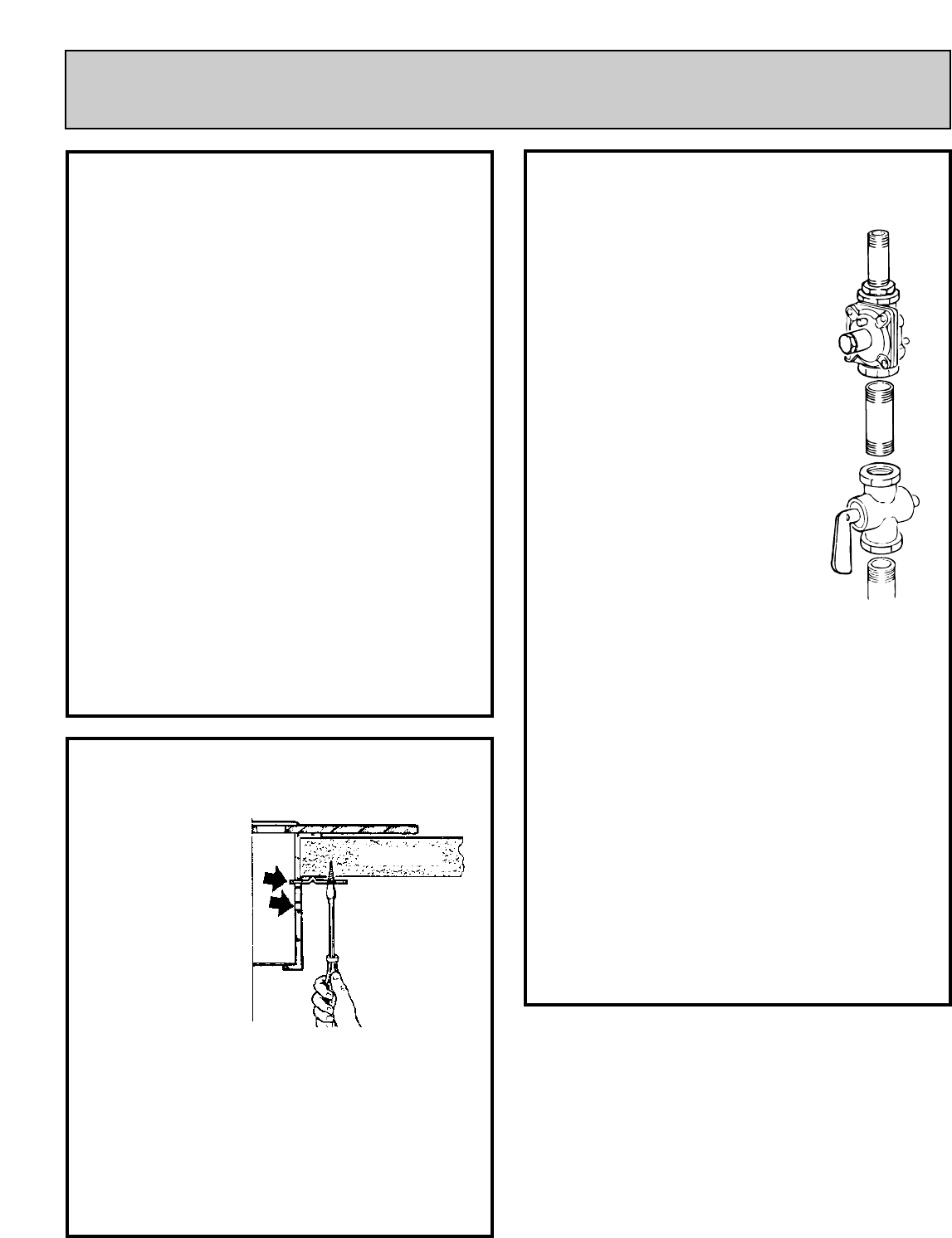
13
STEP 6
GAS CONNECTION
Install the supplied pressure
regulator and nipple in the gas
line as close to the cooktop inlet
as possible, making sure the
regulator is installed in the right
direction.
Install a manual shut-off valve
in the gas line in an easily
accessible location, for the
purpose of turning on or
shutting off the gas supply to the
appliance, as close to the pipe
stub as possible. Be sure you
know how and where to shut off
the gas supply to the cooktop.
NOTE: Instead of using solid
piping to connect to pressure
regulator, an approved flexible
metal appliance connector may
be used between the pipe stub
and shut-off valve and the
pressure regulator, if local codes permit.
Appropriate flare nuts and adapters are required
at each end of the flexible connector.
Turn on the gas; check for leaks using a
liquid leak detector at all joints in the system
(the pressure test nipple is adjacent to the gas
inlet pipe on the rear right hand side of the
cooktop bottom).
CAUTION: DO NOT USE A FLAME
TO CHECK FOR GAS LEAKS.
IMPORTANT–Disconnect the cooktop and the
individual shut-off valve from the gas supply
piping system during any pressure testing of that
system at test pressures greater than 1/2 psig.
Isolate the cooktop from the gas supply piping
system by closing the individual manual shut-off
valve to the cooktop during any pressure testing
of the gas supply piping system at test pressures
equal to or less than 1/2 psig.
STEP 4
PROVIDE ADEQUATE GAS SUPPLY
This cooktop is designed to operate on natural
gas at 4″ of water column pressure or on LP gas
at 10″ of water column pressure. It is shipped
from the factory set for natural gas. If you decide
to use this cooktop with LP gas, conversion
adjustments must be made by a service
technician or other qualified person.
A pressure regulator is to be connected in series
with the manifold of the cooktop and must
remain in series with the supply line regardless
of whether natural or LP gas is being used.
For proper operation, the maximum inlet
pressure to the regulator must be no more
than 10″ water column pressure for natural
gas, or 14″ water column pressure for LP
gas. For checking the regulator, the inlet
pressure must be at least 1″ greater than the
regulator output setting. If the regulator is set
for 4″ of water column pressure, the inlet
pressure must be at least 5″. If the regulator is
set for 10″, the inlet pressure must be at least 11″.
For ease of installation, and if local codes
permit, the gas supply line into the cooktop
should be 1/2″ or 3/4″ I.D. flexible metal
appliance connector three to five feet in length.
STEP 5
INSTALLING THE COOKTOP
Remove all
packaging
material from the
cooktop. Peel the
backing from the
self adhesive
gasket strip, and
apply gasket to
the underside of
the glass, on all
four sides, as
close as possible
to the edge without protruding.
Position the cooktop over the cut-out opening
and lower into place, making sure that the
power cord is dropped into the cabinet. Press
gently and evenly to firmly seat the unit in the
countertop. Slots are provided on each side of
the case to accept the mounting brackets.
Insert bracket into the highest available slot,
(depending on the countertop thickness), and
secure with the screws provided.
Countertop



